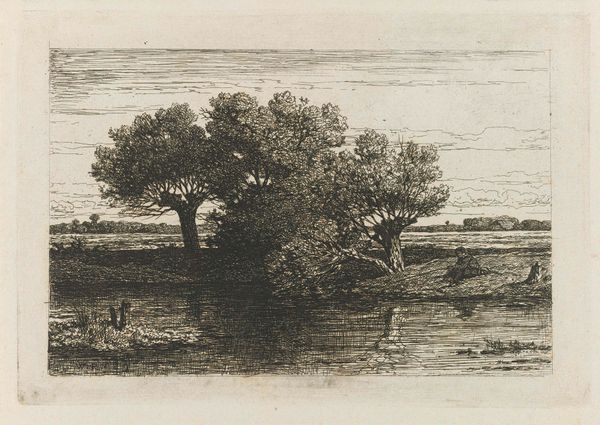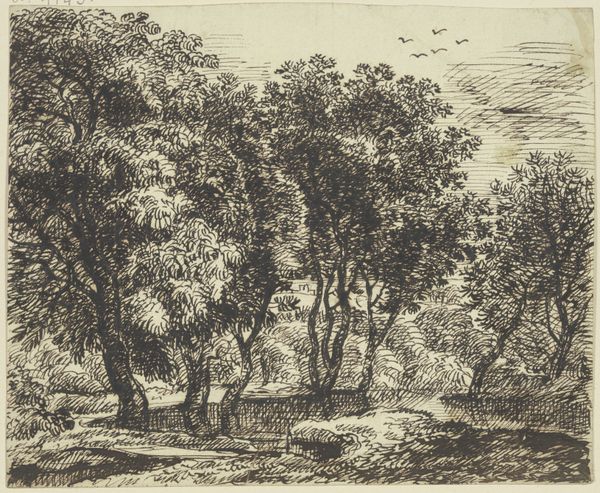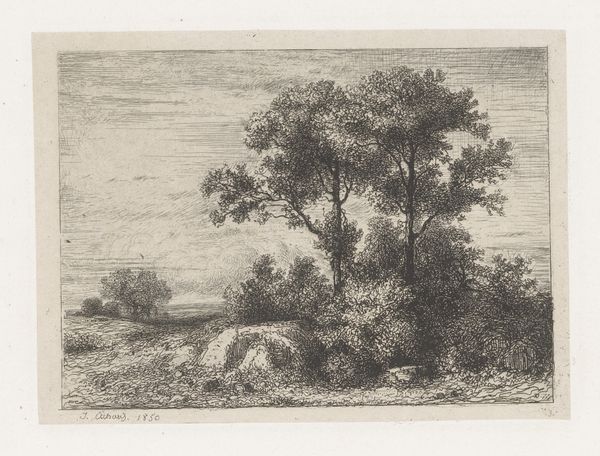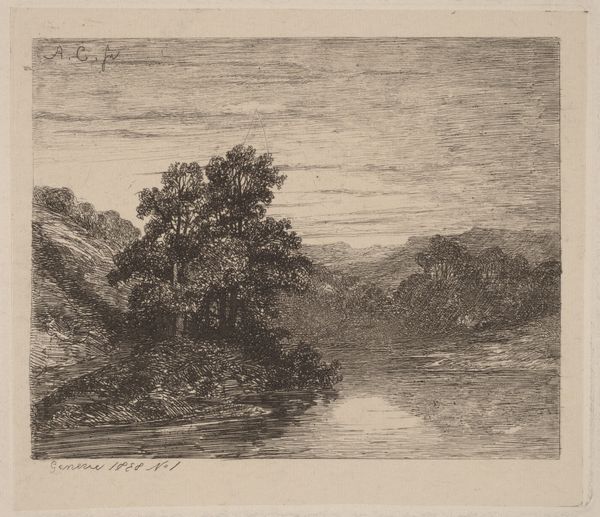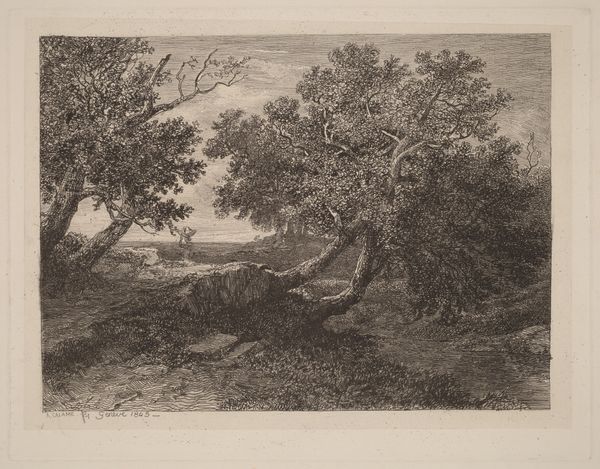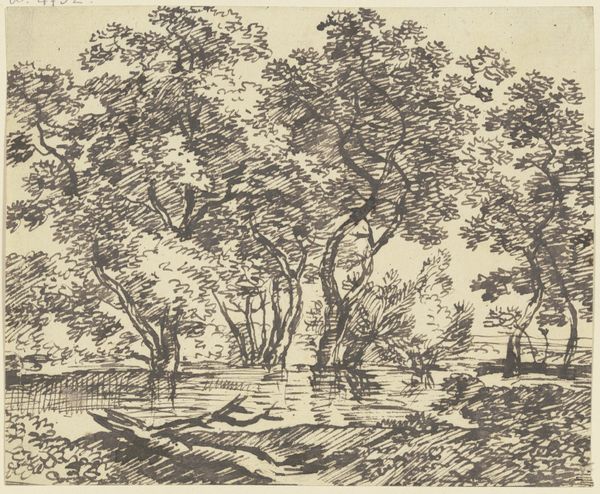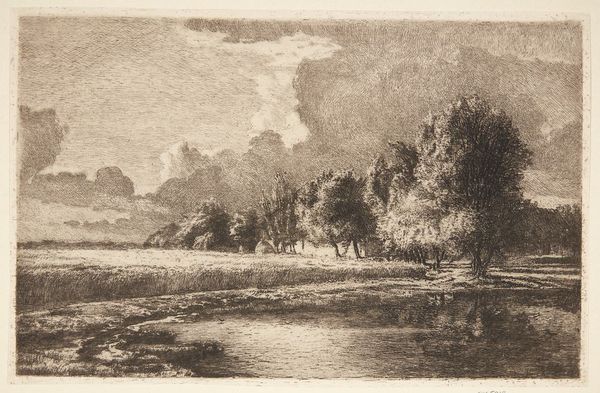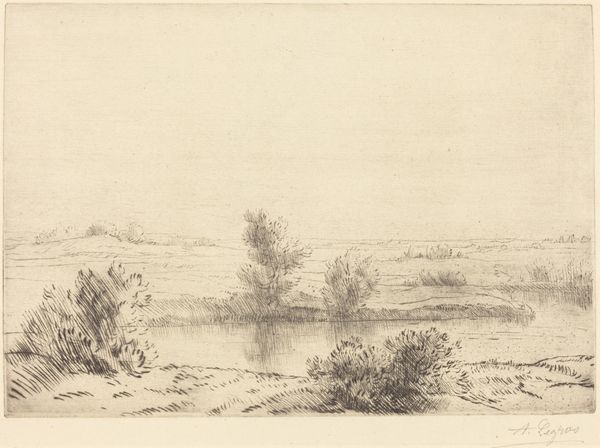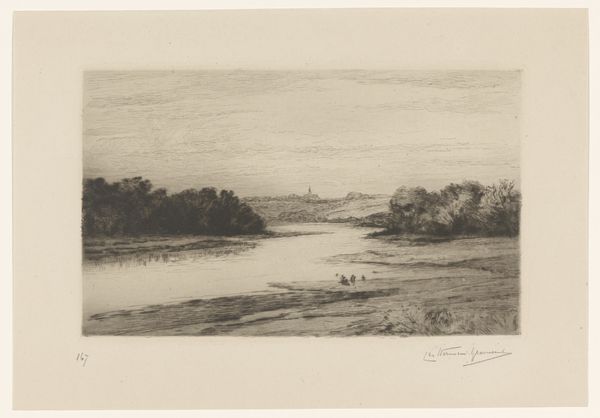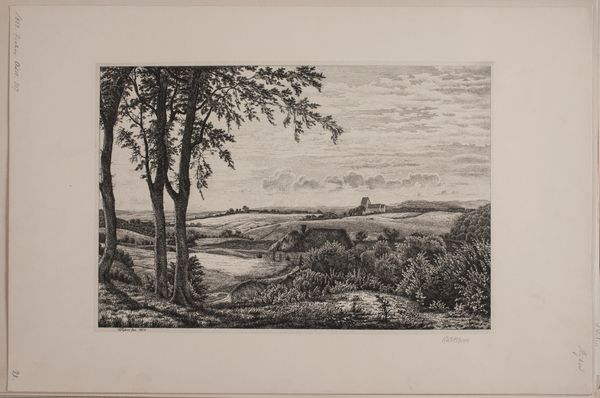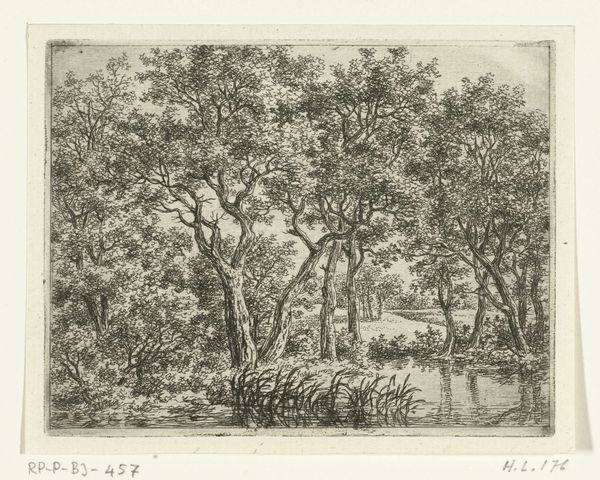
Dimensions: height 136 mm, width 187 mm
Copyright: Rijks Museum: Open Domain
Curator: This etching by Willem Roelofs, created around 1851, is entitled "Beek" which simply translates to "Stream". It’s currently held here at the Rijksmuseum. What is your initial impression? Editor: Quiet. Intimate even. The details pulled from the trees using only etching lend it a soft, almost blurred quality despite the precision of the lines. It’s about the light and how it filters through the leaves and reflects off the water. I wonder about the amount of labor involved in creating so much delicate shading using just etched lines. Curator: I see something of a return to the golden age landscapes, wouldn't you agree? These wooded scenes hearken back to a classical vision. One that promotes an ideal relationship between man and nature. A relationship, moreover, defined through the lens of romanticism. Editor: Except the actual labor is a far cry from pastoral idylls. Etching, unlike painting, involves acids, precise timing, physical exertion of working the plate... all very material and present processes which I wonder if those drawn to these works truly comprehend. The tools and processes are every bit a part of the meaning as what's being depicted. Curator: And what meaning do you derive then? Editor: This almost obsessive detail and focus on the land seems like an attempt to possess it in some way. To capture every detail, own it, reproduce it ad infinitum with this printed format. Are these romantic images, then, just disguised records of a growing desire for resource extraction, for ownership of the land itself? I see a parallel to colonialism in that hunger for owning the view, owning the scene itself. Curator: A rather cynical read of such a beautiful piece of work. But one I cannot fully dismiss. Art and its historical reading evolve over time. As our collective conscious expands. It reminds us that these artworks hold multiple layers. Editor: Precisely, and acknowledging the messy, very real processes of creation lets us pull back a bit of that surface, that seemingly perfect, nature, and look into our motivations, and their effect, however unknowingly, on the work itself.
Comments
No comments
Be the first to comment and join the conversation on the ultimate creative platform.

